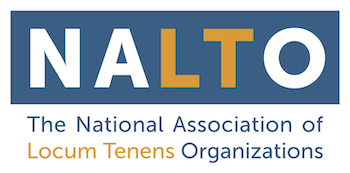Locum Tenens Docs Primed to Care for an Aging Population - (Physicians Practice)
Each day, the number of Americans joining the ranks of our aging population is increasing more than ever before. According to the US Census Bureau, the population of seniors (65+) in the U.S. has passed 50 million for the first time in history and is projected to pass 70 million in the next 25 years. We simply have more people getting older and living longer than any previous generation.
In health care staffing, the issue of our aging population has long been a major factor in what drives the ongoing physician shortage, which some studies project may reach 100,000 doctors by the year 2030 (AAMC 11/17).
As a result, the locum tenens industry is aiming to become the primary workforce solution to fill this growing gap in many ways. Medical practices and facilities rely on temporary physicians to provide coverage in key areas to offset the potential loss of revenue they face in conjunction with their inability to meet patient demand.
At the same time, the subject of our aging population is also very personal to each of us. We all share in it together, in the context of the ones we love.
In my own family, we recently helped my father move into a memory care center. He was diagnosed with dementia seven years ago, and I’ve watched my mom become his caregiver over that time. I know many other families have similar stories of their own.
The experience is providing me with a fresh perspective on the aging population, including the opportunities we have in learning to care for them:
Primary Care
Increasing our knowledge of this age group can strengthen primary care by reinforcing its role throughout the patient lifecycle, particularly with respect to specialty referral and early recognition of diseases such as Alzheimer’s — now the sixth leading cause of death in the U.S., with no prevention, treatment, or cure available to us (ALZ).
Primary care has an opportunity to grow overall where geriatrics is falling short. There’s obviously a distinct difference between adult care and geriatric care. However, the fact remains we have 30 percent of our U.S. population in need of some type of geriatric care, and just over 5,200 board-certified geriatricians to treat them. We fall short by 75 percent. We require over 21,000 geriatricians to properly meet this population, and that’s still only one geriatric MD per 700 patients at a time (ACGME 2016).
The gap widens when you consider the same study’s finding that shows a 21 percent decrease in geriatric residents. We keep asking for more federally funded residency slots to solve the physician shortage, but geriatrics is unique in that it’s not currently being fulfilled at the level we set twenty years ago. A career path focused on this growing aging population simply does not compete financially with other options available to new doctors.
I was recently surprised to learn that so many in millennials are caregivers. One quarter of people ages 18-34 take care of a loved one (AARP & The National Alliance for Caregiving). How do we encourage our young caregivers to pursue a medical career? Then once they begin, how do we motivate and empower them to higher levels within our health care system that utilize their eldercare experience?
Do our current physician practices clearly recognize today’s caregivers and the opportunity for increased communication in the hopes of better understanding each other? Does health care delivery actually begin first outside the industry of medicine, with a loved one at home?
Among the many benefits we typically list as reasons that physicians should consider locum tenens, additional income, the flexibility to travel, and freedom from employed bureaucracy often tops the list.
Increased exposure to our aging population unfortunately rarely gets mentioned. However, there are clear opportunities in learning to care for them.
--
Mike Gianas (Redemption Creative LLC) is a Dallas, Texas-based healthcare marketing consultant with the National Association of Locum Tenens Organizations® (NALTO®), the only professional association of temporary physician staffing firms committed to a code of ethics and to maintaining the highest industry standards.
(Featured in Physicians Practice, February 19, 2018)
With more than 50 million seniors in the U.S., there is a need for physicians to care for the elderly. Enter: locum tenens docs.
By Mike Gianas
